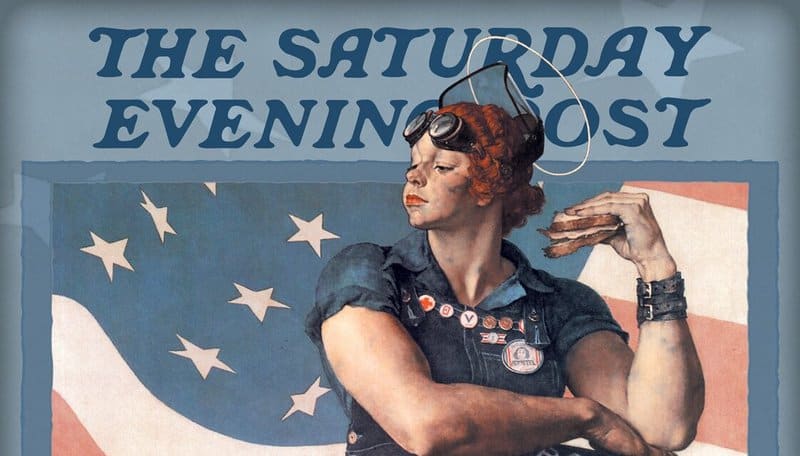One of World War II’s most famous images, that is seen as iconic today, was hardly noticed by anybody during the conflict. One of the war’s greatest technological breakthroughs, the world’s first ballistic missile, was intended to wreak havoc and destruction. It did less than it creators sought, and after the war, more good than they had imagined. Below are twenty one things about those and other lesser known aspects of significant WWII facts and figures.
21. The We Can Do It! Poster

The “We Can Do It!” is one of the most iconic images associated with WWII today. During the war itself, however, hardly anybody saw that poster or even knew it existed. The image was not created by the US government as inspirational propaganda for the public at large. Instead, it was commissioned by Westinghouse Electric and Manufacturing Company and targeted at its workers. Produced by graphic artist J. Howard Miller in 1943, it was part of a series of posters that were displayed for two weeks in some Westinghouse factories, before it was taken down. Nowadays, the poster is seen as a symbol of female empowerment, to the effect that women are strong and can do whatever they put their minds to. When Westinghouse commissioned it, though, the poster was intended to get female factory workers to work harder and follow orders.

The “It” in the poster is clarified by a companion poster, in which a male manager counsels: “Any Questions About Your Work? Ask Your Supervisor“. In context, the poster was a paternalistic exhortation to female employees that all was possible, so long as they were team players and followed orders. Also, the woman depicted and often referred to as Rosie the Riveter was not a riveter. The posters were displayed in factories that produced helmet liners, a process that involves no riveting. It was largely forgotten, until 1982, when the Washington Post Magazine ran an article about posters in the National Archives that included We Can Do It! Nearly four decades after WWII, the poster finally gained notice, and went viral. It was depicted on the cover of Smithsonian Magazine, was featured in a US post stamp, and was misinterpreted – or reinterpreted – by feminists as a call for female empowerment.

